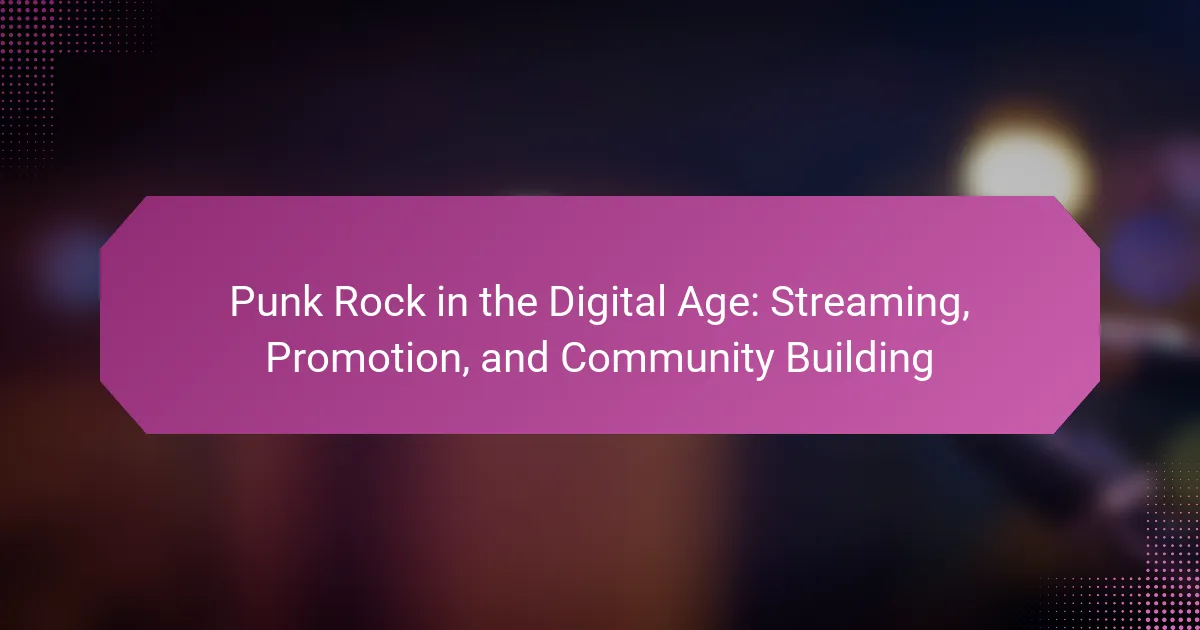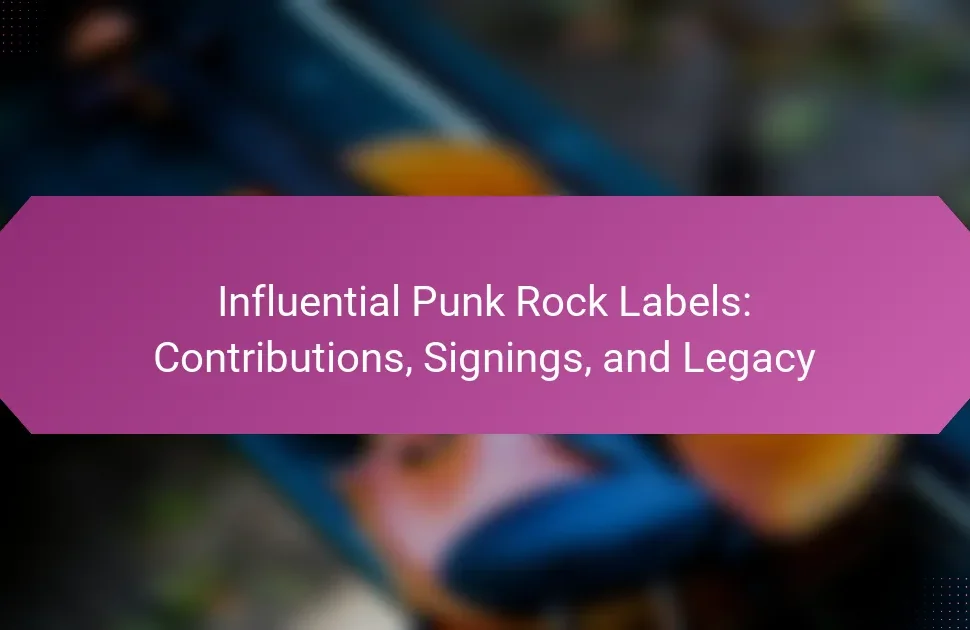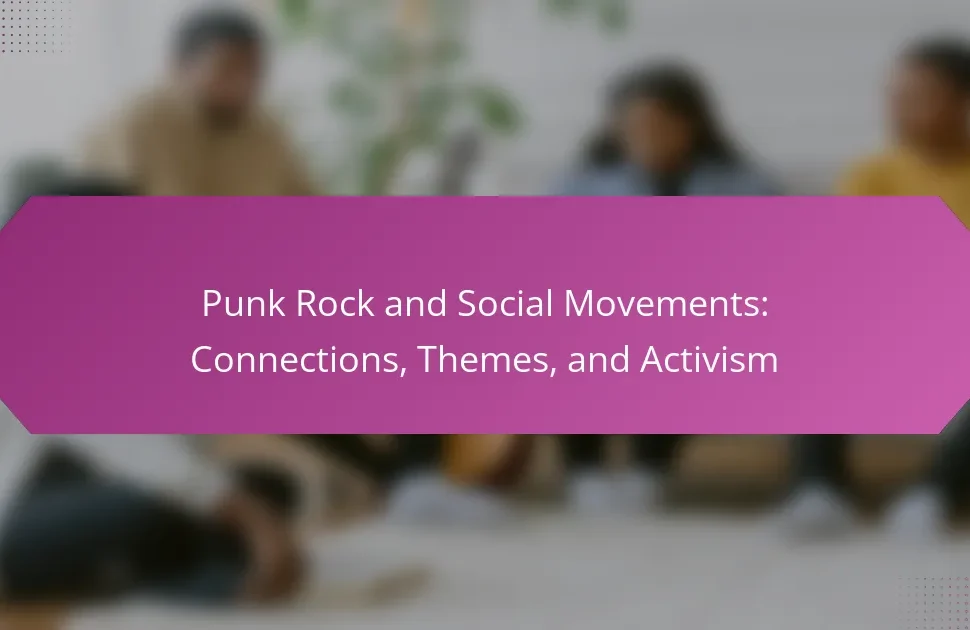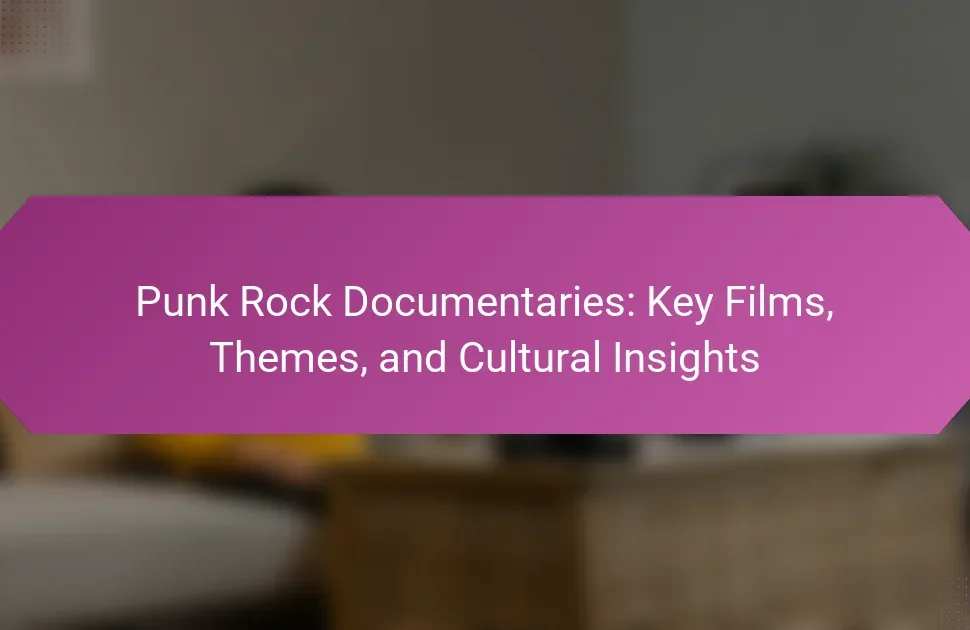Punk rock is evolving in the digital age, enhancing accessibility and community engagement. Streaming platforms like Spotify and Bandcamp allow independent artists to reach wider audiences. Social media facilitates direct interaction between fans and musicians, fostering authentic connections. Effective promotional strategies and grassroots initiatives are crucial for maintaining the punk ethos while adapting to new technologies.
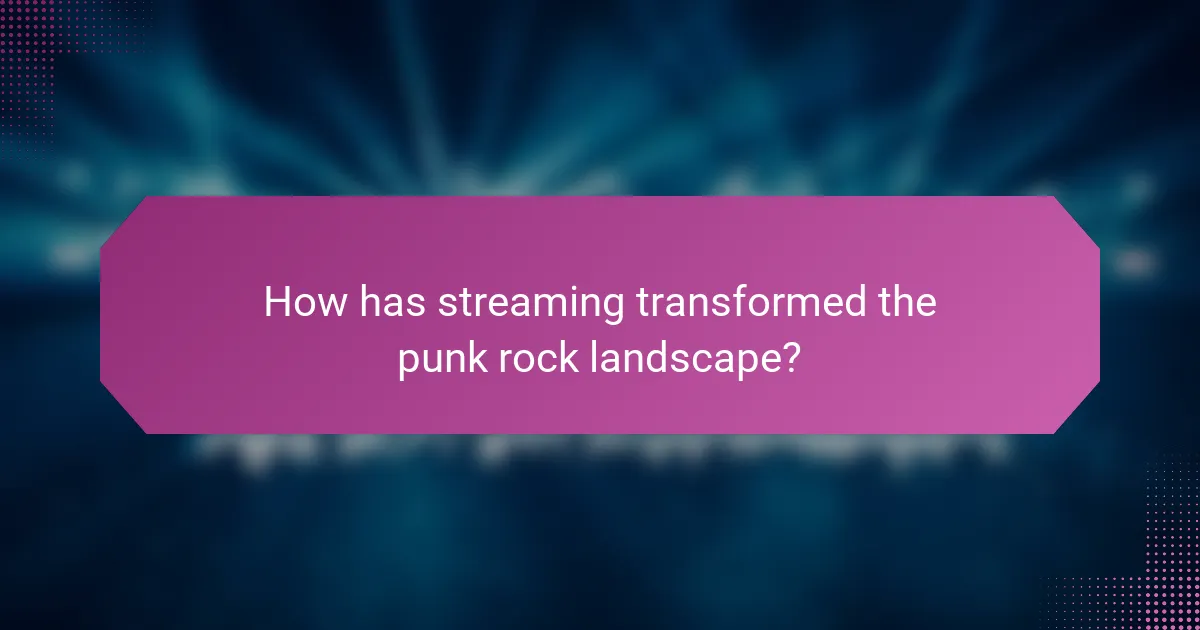
How has streaming transformed the punk rock landscape?
Streaming has significantly transformed the punk rock landscape by enhancing accessibility, promoting independent artists, and fostering community engagement. The shift to digital platforms allows fans to discover new bands effortlessly, breaking geographical barriers. Independent artists can now distribute music without traditional label constraints, leading to a more diverse punk scene. Streaming services also facilitate community building through playlists, social media integration, and live-streamed events, connecting fans and artists directly. This digital evolution has revitalised punk rock, making it more inclusive and dynamic.
Which platforms are most popular for punk rock artists?
Streaming platforms like Spotify, Apple Music, and Bandcamp are popular among punk rock artists for music distribution and promotion. Social media platforms such as Instagram and TikTok facilitate community building and fan engagement. Additionally, YouTube serves as a vital space for music videos and live performances, enhancing visibility. Each platform supports unique attributes, like Spotify’s algorithm-driven playlists and Bandcamp’s direct artist-to-fan sales model.
What are the advantages of streaming for emerging punk bands?
Streaming offers significant advantages for emerging punk bands, including wider audience reach, cost-effective promotion, and community engagement. Bands can easily distribute their music globally, bypassing traditional gatekeepers. This accessibility allows fans to discover new artists, fostering a vibrant online community. Additionally, streaming platforms provide valuable analytics, helping bands understand their audience and tailor their marketing strategies.
How do streaming algorithms impact punk rock visibility?
Streaming algorithms significantly enhance punk rock visibility by optimizing music discovery and audience engagement. These algorithms analyse listener behaviour to recommend tracks, increasing exposure for emerging bands. As a result, punk rock artists can reach wider audiences without traditional promotion methods. Unique attributes of streaming platforms, such as user-generated playlists, further amplify this visibility, allowing fans to curate and share their favourite punk tracks. This community-driven approach fosters a vibrant punk rock culture in the digital age.
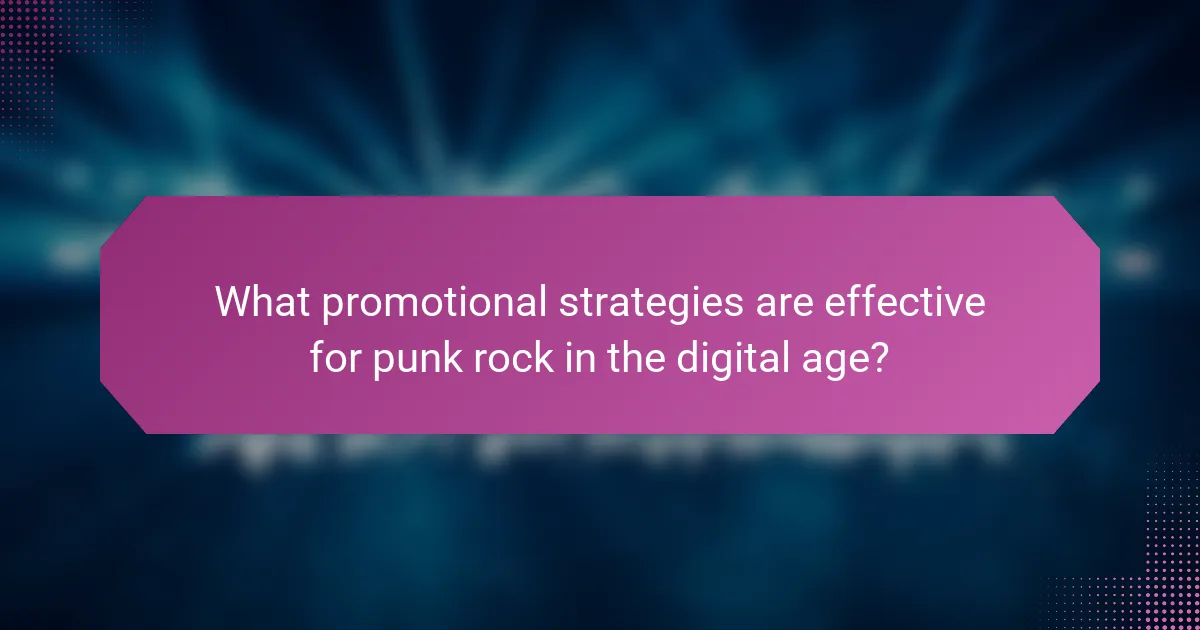
What promotional strategies are effective for punk rock in the digital age?
Effective promotional strategies for punk rock in the digital age include leveraging social media, engaging with fans through live streams, and utilizing music streaming platforms. These methods foster community building and enhance visibility. Social media allows artists to connect directly with audiences, while live streams create interactive experiences. Additionally, music streaming platforms provide access to wider audiences, increasing exposure and potential fan engagement.
How can social media be leveraged for punk rock promotion?
Social media can effectively promote punk rock by building community, engaging fans, and sharing music. Platforms like Instagram, Twitter, and TikTok enable artists to connect directly with their audience, fostering a loyal fan base. Engaging content, such as behind-the-scenes footage and live performances, enhances visibility. Collaborations with influencers amplify reach, while targeted ads can attract new listeners. Additionally, creating events or challenges encourages user participation, further solidifying community ties.
What role do music videos play in digital promotion?
Music videos are essential for digital promotion, enhancing visibility and engagement. They serve as a creative platform for artists to showcase their work, attracting viewers and driving streaming numbers. The visual storytelling in music videos can amplify a song’s message, creating a deeper connection with the audience. Additionally, they facilitate social media sharing, increasing reach and fostering community interactions among fans. In the punk rock scene, where authenticity is crucial, music videos help build a distinct brand identity while promoting new releases effectively.
Which festivals and events are essential for punk rock exposure?
Key festivals for punk rock exposure include the Punk Rock Bowling Festival, Rebellion Festival, and the Vans Warped Tour. These events showcase diverse punk bands, foster community, and promote new music. Punk Rock Bowling, held in Las Vegas, combines music with bowling, creating a unique atmosphere. Rebellion Festival in Blackpool, UK, features a lineup of both classic and emerging punk acts. The Vans Warped Tour, though currently inactive, historically introduced many bands to wider audiences. Engaging in these festivals enhances visibility and strengthens the punk rock community.
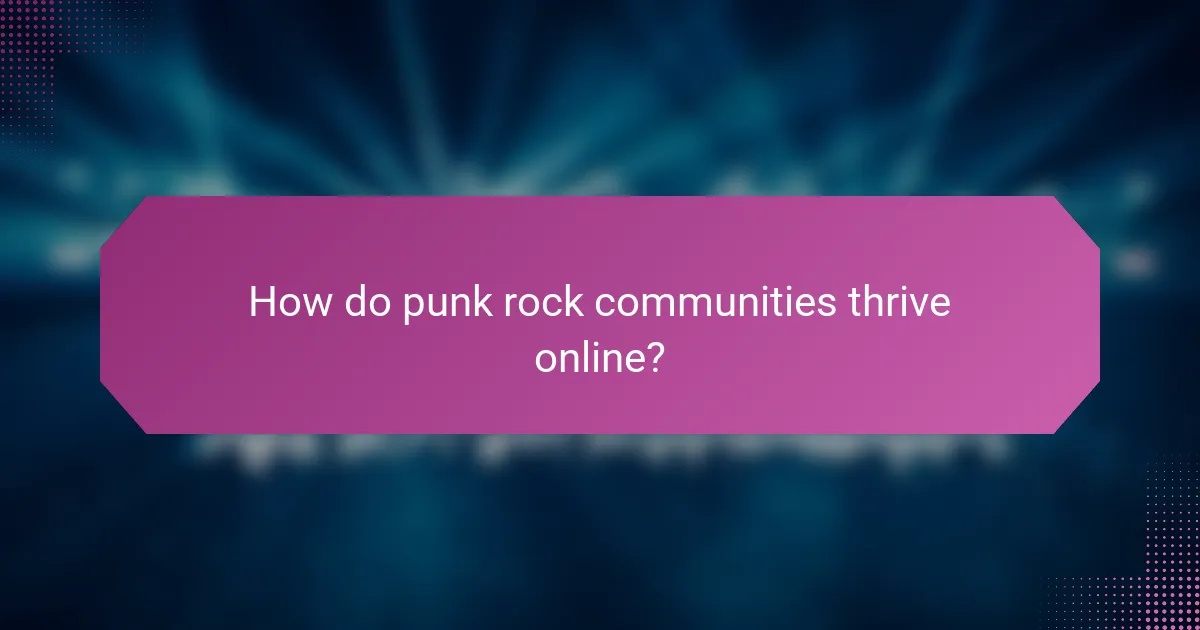
How do punk rock communities thrive online?
Punk rock communities thrive online by leveraging social media, streaming platforms, and grassroots promotion. These digital spaces foster connections among fans and artists, enabling collaboration and engagement.
Social media platforms like Instagram and Twitter allow punk rock bands to share updates, interact with fans, and promote new music. Streaming services such as Spotify and Bandcamp provide accessible channels for distributing music, reaching wider audiences without traditional gatekeepers.
Grassroots promotion remains vital, with online forums and communities facilitating discussions and sharing of local shows. These platforms encourage the discovery of emerging talent, ensuring the punk rock ethos of DIY culture persists in the digital age.
As a result, punk rock communities maintain their vibrancy and relevance, adapting to new technologies while preserving their core values of authenticity and rebellion.
What are the key platforms for building punk rock communities?
Key platforms for building punk rock communities include social media, streaming services, and dedicated forums. Social media platforms like Facebook and Instagram foster engagement through groups and event promotion. Streaming services such as Spotify and Bandcamp allow bands to share music and connect with fans. Dedicated forums and websites create spaces for discussion and community-building, enhancing the punk rock experience.
How do fan interactions shape the punk rock experience?
Fan interactions significantly enhance the punk rock experience by fostering community and engagement. Through social media platforms, fans connect directly with bands, sharing feedback and promoting music. This interaction cultivates a sense of belonging, allowing fans to participate in the creative process. Unique attributes, such as live-streamed performances and virtual meet-and-greets, further deepen these connections. As a result, punk rock evolves into a collaborative culture, blending music with active fan participation.
What unique challenges do punk rock communities face in the digital realm?
Punk rock communities face unique challenges in the digital realm, including maintaining authenticity and navigating commercialization. As streaming platforms dominate music consumption, smaller punk bands struggle to gain visibility amid mainstream artists. Additionally, digital promotion often prioritises algorithms over grassroots connections, which can dilute community engagement. The rapid pace of social media can overwhelm bands, making it difficult to cultivate meaningful relationships with fans. These factors contribute to a tension between preserving punk’s rebellious spirit and adapting to a commercialised digital landscape.
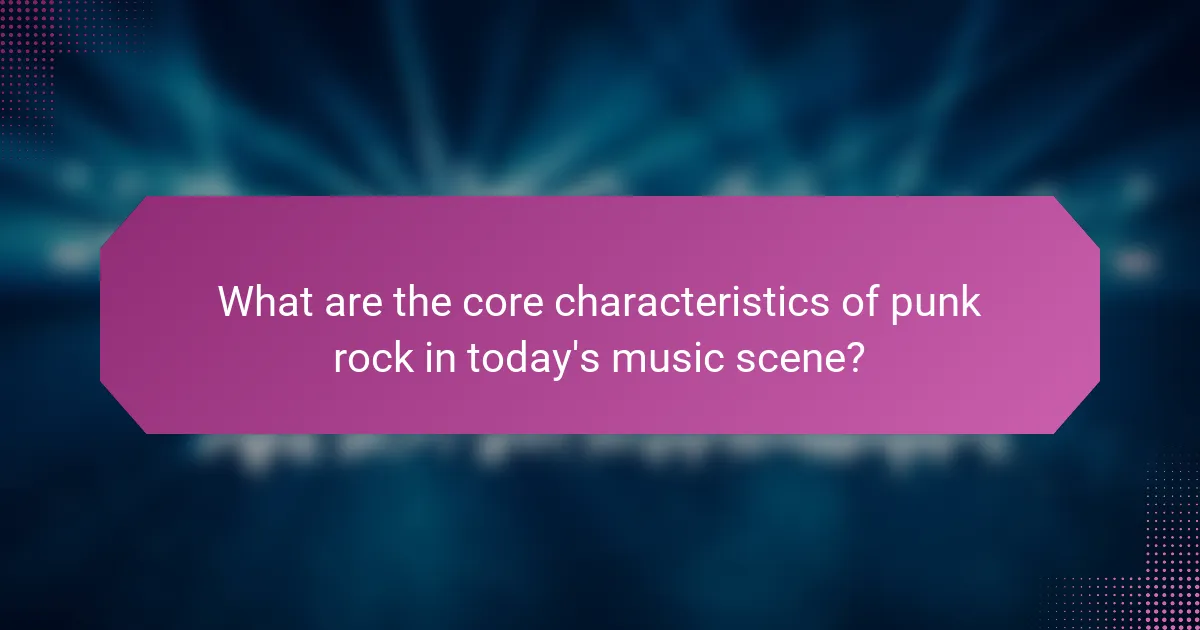
What are the core characteristics of punk rock in today’s music scene?
Punk rock today is characterised by its digital accessibility, grassroots promotion, and strong community engagement. Streaming platforms have democratised music distribution, allowing bands to reach wider audiences without traditional labels. Social media facilitates direct interaction between artists and fans, fostering a sense of belonging. Additionally, punk rock maintains its rebellious spirit by addressing social issues, appealing to new generations. The unique attribute of punk rock’s DIY ethos remains central, encouraging independent creation and distribution.
How has the punk rock aesthetic evolved in the digital age?
Punk rock has evolved significantly in the digital age, embracing streaming, social media, and online communities. Streaming platforms have democratised music distribution, allowing punk bands to reach global audiences without traditional labels. Social media facilitates direct interaction between artists and fans, fostering community building and engagement. This shift has led to a resurgence of DIY ethics, with bands using online tools for promotion and collaboration. Unique attributes of this evolution include the rise of virtual concerts and online fan clubs, offering new avenues for connection and creativity.
What influences do digital tools have on punk rock music production?
Digital tools significantly enhance punk rock music production by streamlining processes and expanding reach. They enable artists to produce high-quality recordings from home studios, democratising access to music creation. Platforms like Bandcamp and SoundCloud allow for direct distribution, fostering community engagement and fan interaction. Additionally, social media amplifies promotion efforts, helping punk rock bands connect with global audiences. This digital landscape supports independent artists, allowing for greater creative freedom and innovation in the genre.
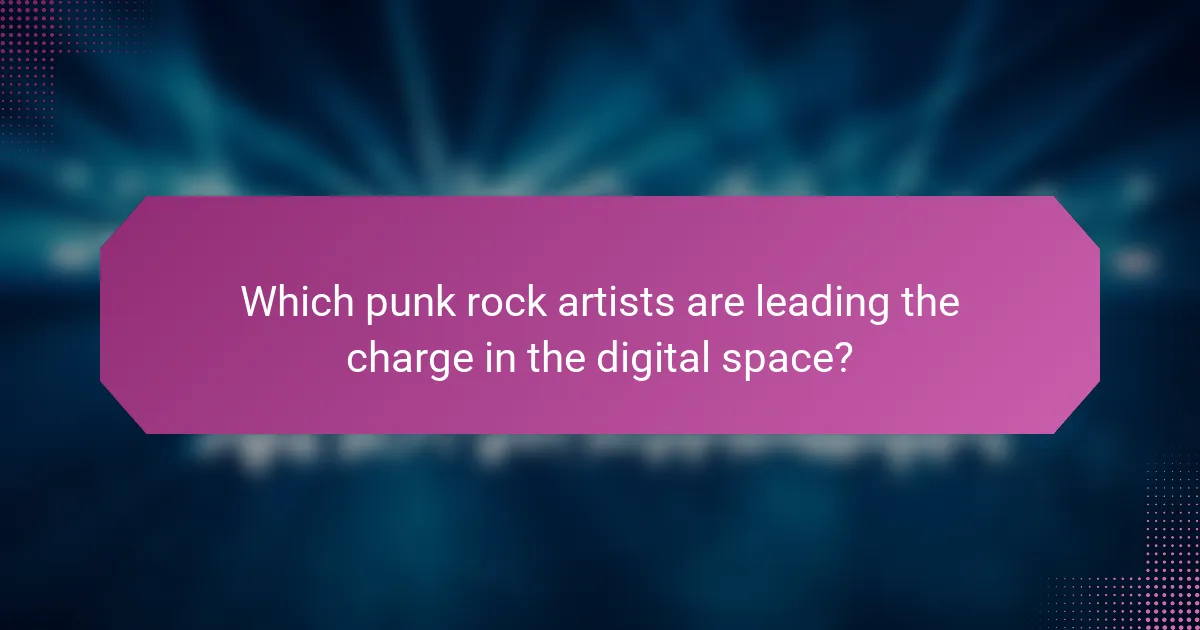
Which punk rock artists are leading the charge in the digital space?
Several punk rock artists are innovating in the digital space by leveraging streaming platforms and social media. Notable figures include Billie Joe Armstrong of Green Day, who actively engages fans through online content, and Laura Jane Grace of Against Me!, who promotes community-building initiatives and digital activism. These artists utilise platforms like Bandcamp and Spotify to distribute music and connect with audiences directly. Their strategies highlight the importance of authenticity and engagement in the evolving punk rock landscape.
How do these artists engage with their fanbase online?
Punk rock artists engage with their fanbase online through social media, live streams, and interactive content. They utilise platforms like Instagram and TikTok to share music, behind-the-scenes footage, and personal stories. This direct interaction fosters community and builds loyalty. Unique attributes include the use of DIY marketing strategies and grassroots campaigns that resonate with their audience. As a result, these artists create a sense of belonging, encouraging fans to participate in discussions and share their experiences.
What innovative approaches are they using to connect with audiences?
Punk rock artists are leveraging social media, live streaming, and interactive platforms to engage audiences. These innovative approaches foster direct communication, enhance fan experiences, and build vibrant online communities. For instance, artists host virtual concerts and Q&A sessions, creating a sense of intimacy and connection. Additionally, collaborations with influencers amplify reach and attract diverse listeners, showcasing the genre’s adaptability in the digital landscape.
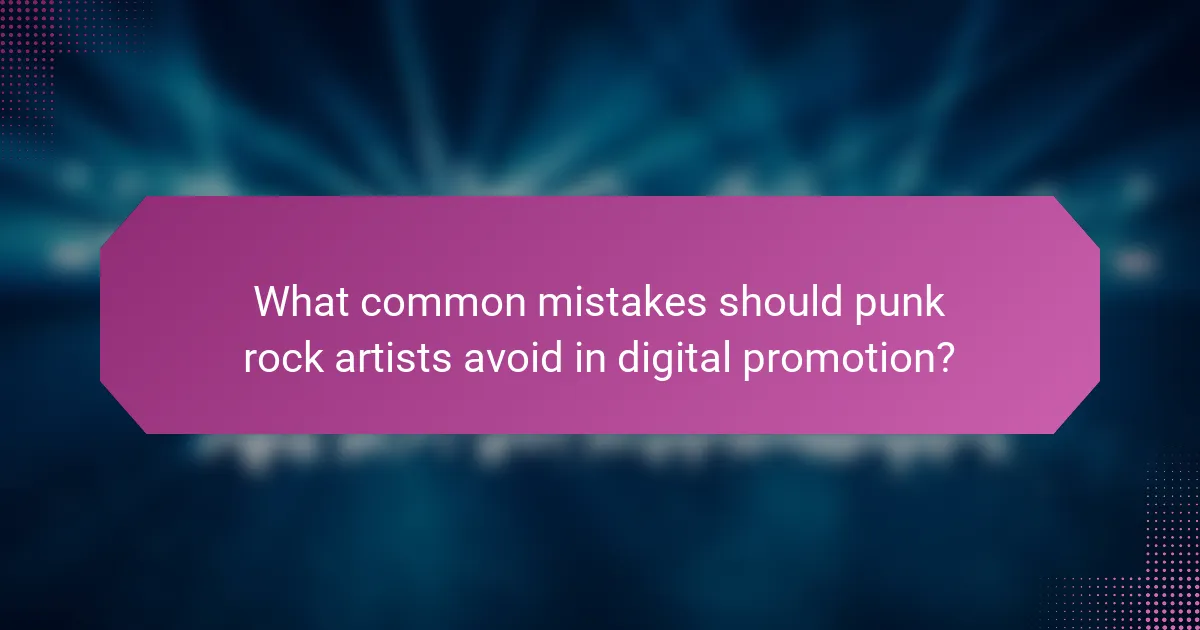
What common mistakes should punk rock artists avoid in digital promotion?
Punk rock artists should avoid common mistakes like neglecting social media engagement, failing to create authentic connections, and overlooking data analytics. These errors can hinder effective digital promotion and community building.
1. Ignoring audience interaction can lead to disengagement.
2. Over-promoting without genuine content may alienate fans.
3. Not utilising analytics misses valuable insights for strategy.
4. Failing to collaborate with other artists limits reach.
5. Underestimating the importance of visual branding can weaken identity.
How can artists ensure they maintain authenticity while promoting online?
Artists can maintain authenticity while promoting online by staying true to their unique sound and values. Emphasising genuine engagement with fans fosters trust and loyalty. Utilising platforms that align with their artistic vision enhances credibility. Sharing personal stories and creative processes can deepen connections. Regularly interacting with the community creates a sense of belonging. Balancing promotion with authentic content ensures artists remain relatable and true to their punk rock roots.
What are best practices for engaging with fans on social media?
Engaging with fans on social media requires authenticity and consistency. Share behind-the-scenes content, respond promptly to comments, and create interactive posts like polls or Q&As. Highlight community contributions to foster a sense of belonging. Utilise analytics to understand audience preferences and tailor content accordingly.
How can punk rock musicians effectively measure their digital success?
Punk rock musicians can measure their digital success through analytics, fan engagement, and streaming metrics. Key performance indicators include total streams, social media interactions, and website traffic. Tools like Spotify for Artists and Google Analytics provide insights into audience demographics and behaviour. Engaging with fans through social media and monitoring feedback helps refine promotional strategies. Regularly assessing these metrics informs future content and community-building efforts.
